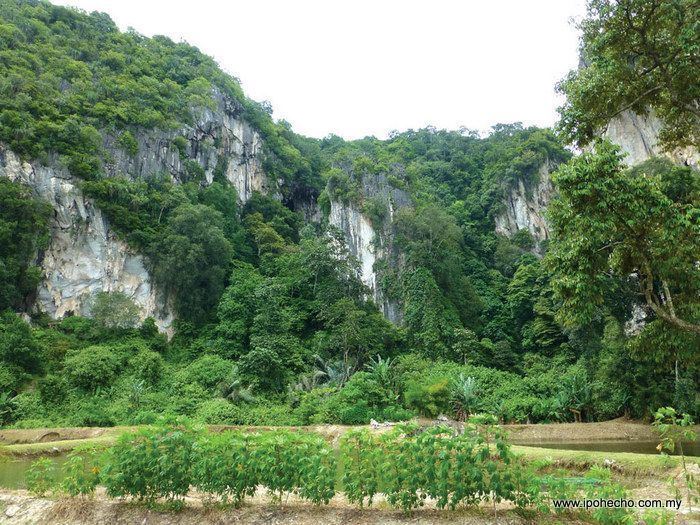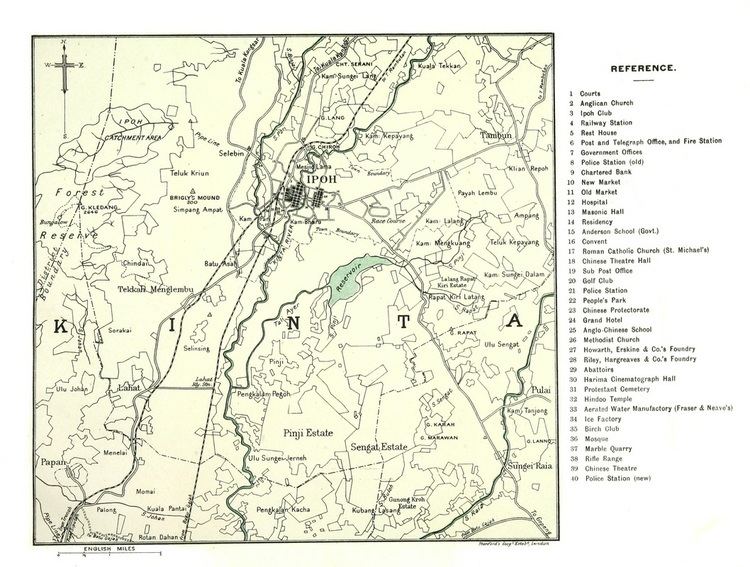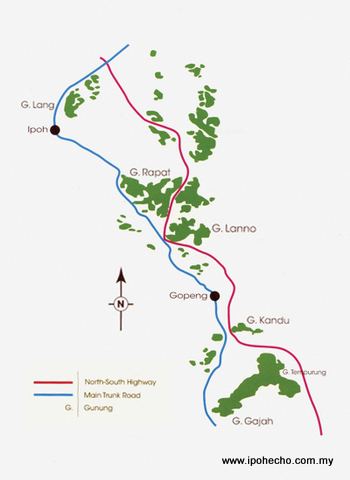 | ||
Kinta Valley in Perak, Malaysia, has historically been the most productive tin-producing district in the world. The valley is formed by the Kinta River, a tributary of Sungai Perak, which flows between the Main Range and the Kledang Range. It forms the largest tin field along the Siamese-Malayan peninsula tin belt. It has been mined since ancient times by indigenous peoples but more intensively mined by the Chinese and Europeans since the end of the nineteenth century. Today, the modern Kinta district is one of the ten administrative districts of Perak.
Contents
- Sree yantra urumi melam kinta valley 1
- History
- Early mining methods
- Chinese mining
- European mining
- Dredging
- References

Sree yantra urumi melam kinta valley 1
History

The Kinta Valley has been visited for tin by Indian traders since ancient times. Buddhist bronze artefacts have been excavated in Kinta in 1931.
Early mining methods

An early method of indigenous mining was the Lombong Siam, meaning Siamese mines. Malay miners used ground sluicing or the lampan method by cutting ditches from the nearest river. In the nineteenth century, Mandailing migrants from Sumatra were observed using the tabuk mine, which is an excavated pit from which water is removed by cantilevered baskets.
Chinese mining

The first tin rush to Kinta lasted from 1884 to 1889 where new land was taken up by Chinese miners using labour-intensive methods. Hailing from the farmlands of Guangdong, the Chinese mining workers at first used agricultural implements such as hoes, rakes and baskets to excavate the earth. The Chinese also introduced the water wheel to dewater the mines. The second tin rush lasted from 1889 to 1895, and was characterised by small gangs of tributers using the wooden sluice box (lanchut kechil). Around the turn of the twentieth century, two of the most famous large Chinese mines were the Tambun Mines, owned by Leong Fee, and Tronoh Mines, owned by Foo Choo Choon. There were many successful Chinese miners too like Eu Tong Sen, Chop Thai Lee, Chung Thye Phin, Au Moh Yi, Yau Tet Shin, Khi Ho Nin, Shak Yin Fuk, Lam Look Ing and Aw Kong. Up till the late twentieth century, Chinese women miners could be commonly observed panning tin with wooden trays (dulang) from stream-beds and tailing dumps of tin mines.
European mining

The longest operating European mine in the Kinta Valley was the French Société des Etains de Kinta better known as SEK, which started operating in 1886 and only closed down in 1985. Foo Choo Choon's Tronoh Mines was floated in London and became a European concern. Several opportunities arose for Osborne, founder of the Gopeng tin mining Company, who expanded his business by forming the famous professional partnership of Osborne & Chappell in 1901.
Dredging
In 1913, dredging was put into practice by Malayan Tin Dredging Ltd. (MTD), which later became the largest tin dredging company in the world. It had a significant impact on Kinta in terms of technological advancement. The bucket dredge was introduced and was the final breakthrough of the Malayan tin mining industry.
The last surviving dredge can be found at Batu Gajah along Jalan Tanjung Tualang. It belongs to Southern Malaya Tin Dredging.
